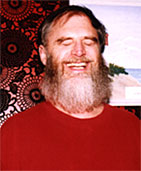|

Here is the tale of "DIG THIS"
These
are Experimental Electronic versions of some of the songs from
the Lo-Fi Acoustic CD, LEGENDS,
DREAMS, AND MYTHS.
Some are original, some are hundreds of years old, but with
tunes supplied by me. Future CD's will have Experimental
Electronic Versions of the rest of the songs from "LEGENDS,
DREAMS, AND MYTHS."
William the Conqueror was Norse by ancestry, which shows the
genetic connection between the Normans and their later
descendants, the Americans.
"Scotland the Brave" is a
song of the lowland Scots, who, including among them the
Scots-Irish, were of mixed blood -- British, Gaelic, and
Anglo-Saxon, but predominantly Anglo-Saxon, which is Norse.
About 90% of the names in the muster roles of the American
revolutionary army were Scottish. Thus, the revolution was
actually a continuation of the border rivalry between the
Anglo-Saxon Scots and the English, however being led by English
colonists. As such, it was not so much of a revolution, after
all.
The colonization of modern Scotland, by Iberians (Hebrews), from
what is presently known as Ireland, can be of interest to
American students of Norse history, inasmuch as these same
colonists later interbred with the denizens of the island
kingdoms surrounding Scotland, and later became Americans.
Take, for example, MacDonald of Skye, who attempted to win
Scotland and was checked at the battle of Harlaw. He was half
Norse. Yet, the name, MacDonald, is unmistakably Gaelic, nicht
wahr?
Tales Behind Some of the Songs
About "Jacob's Dreaming Stone"
"Jacob's Dreaming Stone" traces the bearing of the
stone whereon our father Jacob laid his head to dream.
The saga
begins with his departure for Laban's farm. The stone is
relocated to Scotia, which is presently known as Ireland, thence
to present-day Argyll, thence to Scone, and eventually to the
British coronation seat.
This song includes the core song, "Dalriada," which tells of the "Irish"
colonization of "Scotland" in the 5th century, leading
to the existence of the "Scots" of Scotland.
Tale Behind "William the Conqueror"
William the Conqueror is one of the links between Viking
civilization and the eventual creation of America. In the early
1980's I wanted to put those links into song. I wrote a song
that lasted 20 minutes, all singing, without instrumental
breaks, and played it at a couple of parties,
and after about
the 5th verse, folks stopped listening and started conversing.
In consequence, I shortened the song a couple of times, until
there were only five verses, those having the most dramatic or
indispensable scenes of the narrative.
Having lost some of the
words from my memory, I took out a book about the Norman
Conquest, in order to patch the lacunae in the verses.
Upon more
closely scrutinizing the story, I came to realize that the
Normans were the agents of church building and rebuilding in the
region at the time, whereas the other factions were much less
entwined with the Roman church-organization, while some were of
the old religion.
Thus, I added a reference to the Norman
connection to the Roman church. The book, "Holy Blood, Holy
Grail", points to a Benjamite origin of the Franks. The
Normans interwedded with the Franks.
The Assyrian border-guard
reports on clay tablets are synoptic with Greek and other
histories, which, combined with one another, establish a link
between the Hebrew tribes of Assyrian captivity,
and the
subsequent tribes of Europe, such as Scandinavians, Celts,
Saxons, Iberians, Scythians (who later became known as "german"=genuine
Scythians in order to distinguish them from the Sarmatians, who
drove them out of their territory, and thus became also known as
Scythians), etc..
Thus, I added a verse at the beginning of the
song, pointing to parts of the origin of the Normans. The core
of the song was written either in D.C. or possibly in
Washington, VA, or maybe in Poolesville, MD, in the early-to-mid
1980's.
The later additions and gap-fillings were done in
Frostburg, MD, about the years 1999 and 2001. When I write song
lyrics I just whip them out.
Occasionally I get stuck for a
rhyme that means what I want it to mean, but it takes only about
ten minutes to half an hour to finish a verse.
When I first got
my groove box, in December of 2001, I had already a copying of
the song done acoustically, as a deposit for the copyright
office. I put that on an acoustic CD entitled, "Legends,
Dreams, and Myths" while I was learning to
program the groove box.
Then I programmed an accompaniment to
the singing of William the Conqueror, which, by the advice of my
collaborator, Marc, was deliberately quasi-acoustical sounding, not too
electronic, or techno. Then I added an experimental electronic
long break after the end of the lyrics.
It was too hard to sing
the verses all in a row without a break between the refrain and
the verse (I needed time to remember what the next verse was
going to be), so I added electronic quasi-baroque breaks in
those places.
It took a long time to get the volumes of the
different patterns to match together, since the synthesizer on
each pattern had a different "effect" from the other
patterns. Some were too loud, some too soft, some had the drums
too loud, etc.. It took a long time to balance it.
Finally Marc
and I captured the song and put it into a CD entitled "Dig
This". I would like to add that when I first made the
song, it was kind of humorously inspired by the children's song,
"Sparky the Fire Dog."
The live premiere of the song
was done as the opening act at the premiere of Marc's and Tyler
Ralston's movie, "Dracula Versus Frankenstein", on May
11 of 2002, at the Palace Theatre in Frostburg, MD.
|
